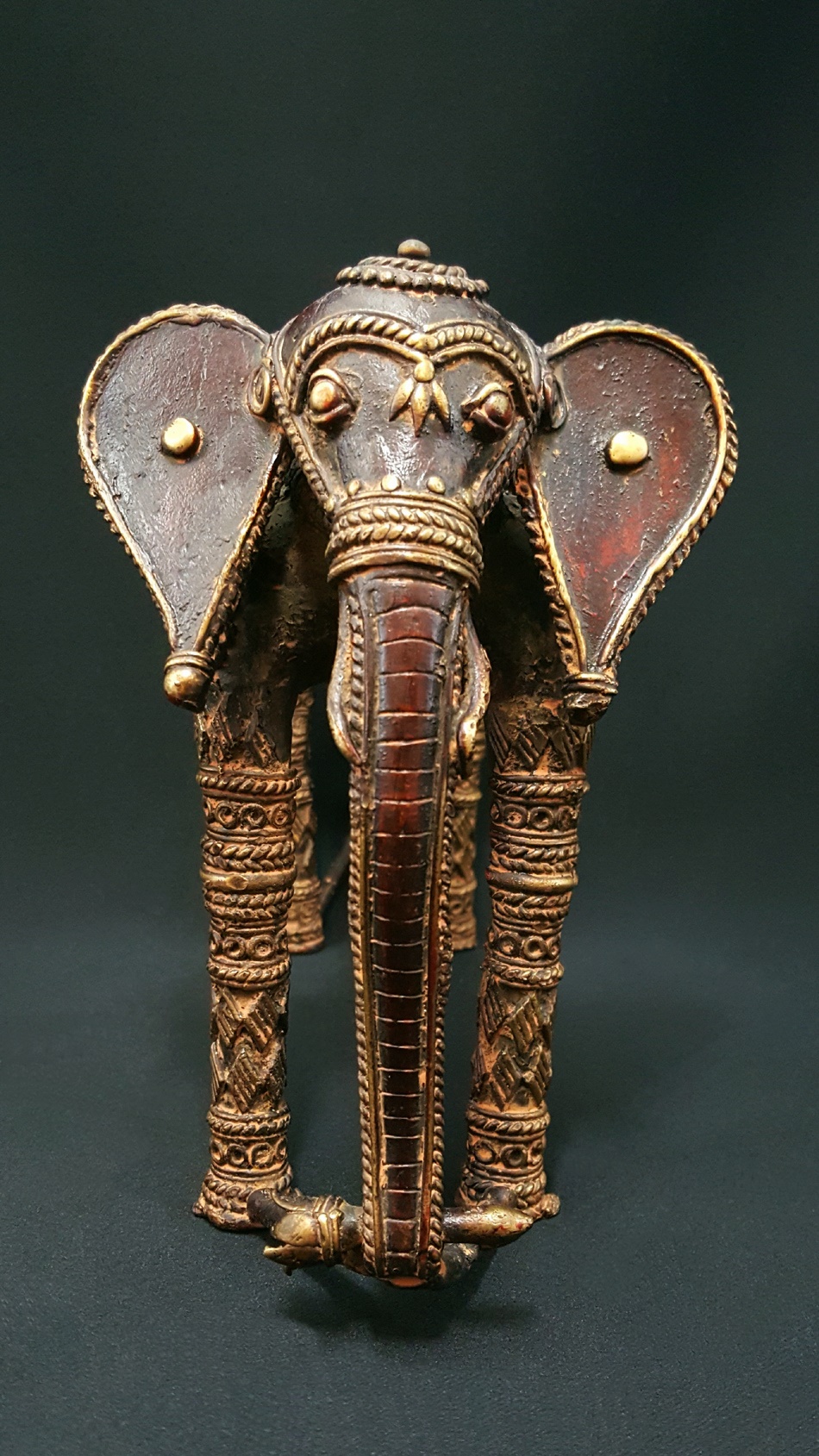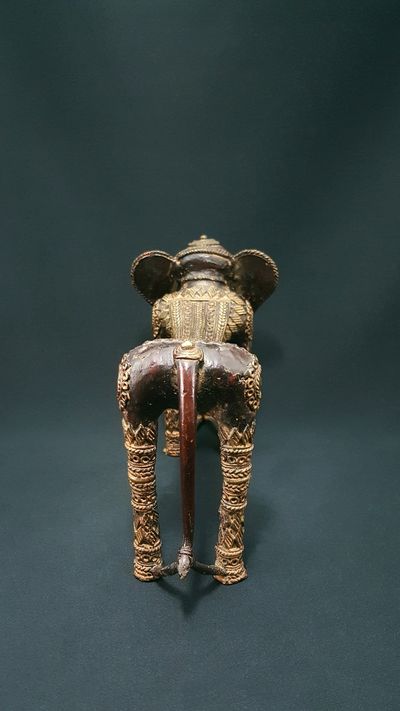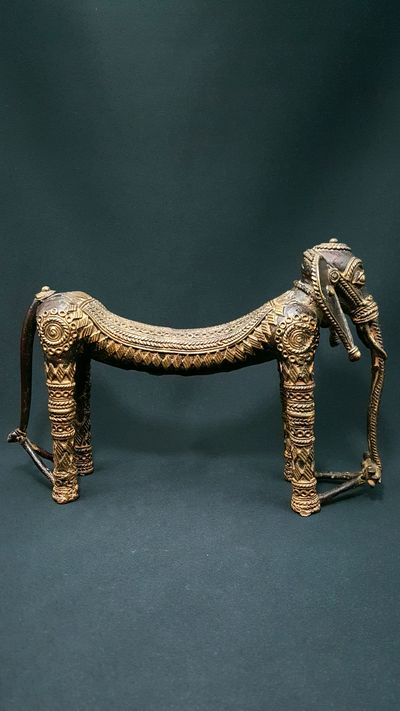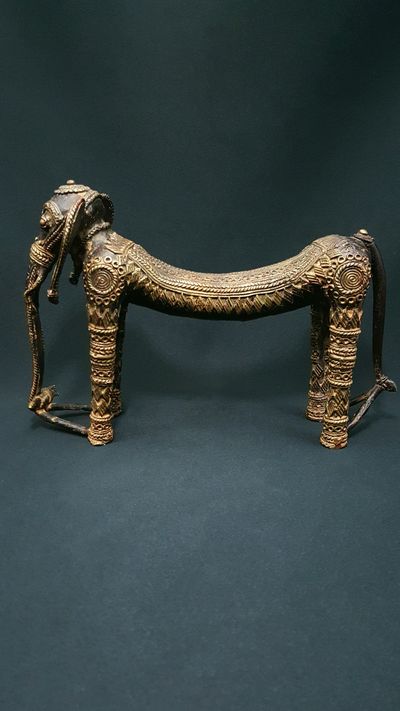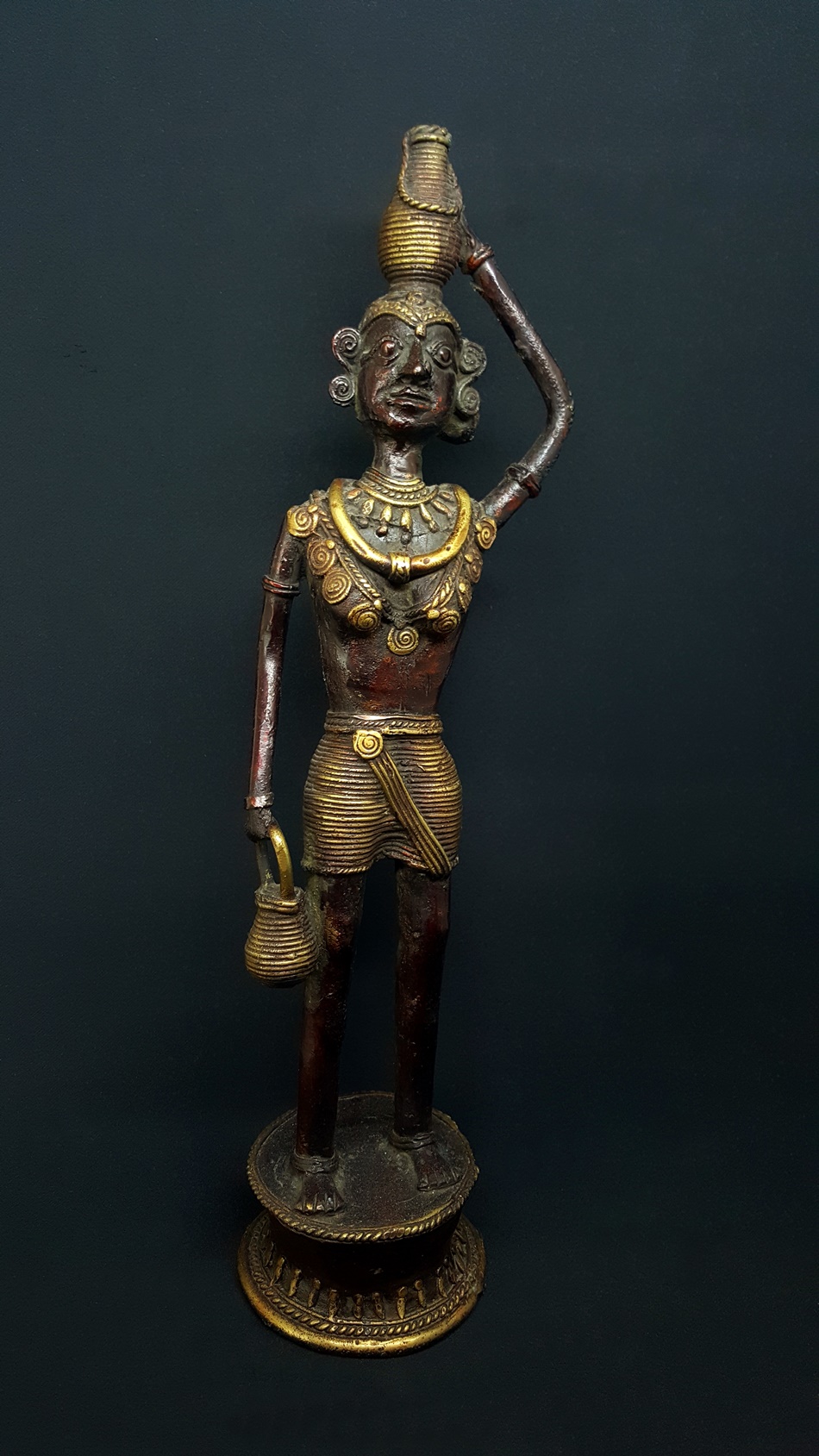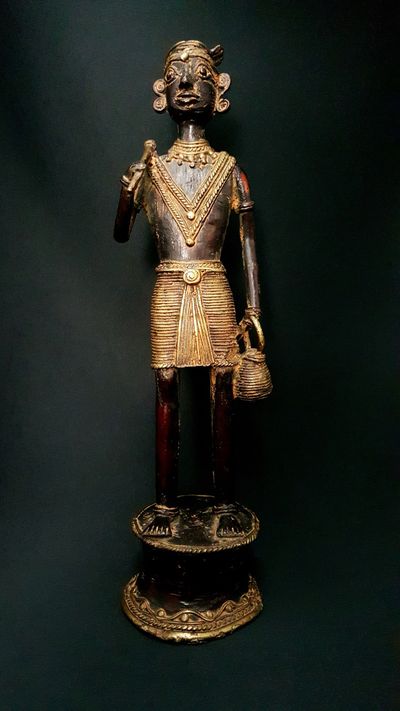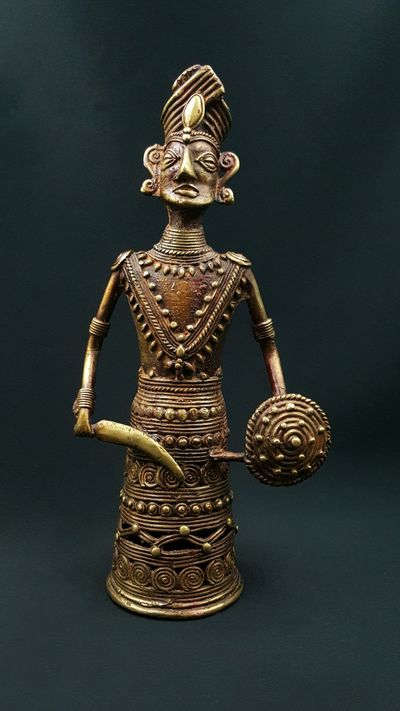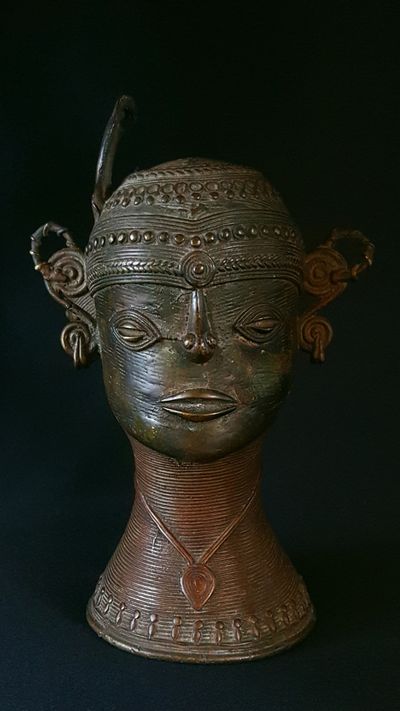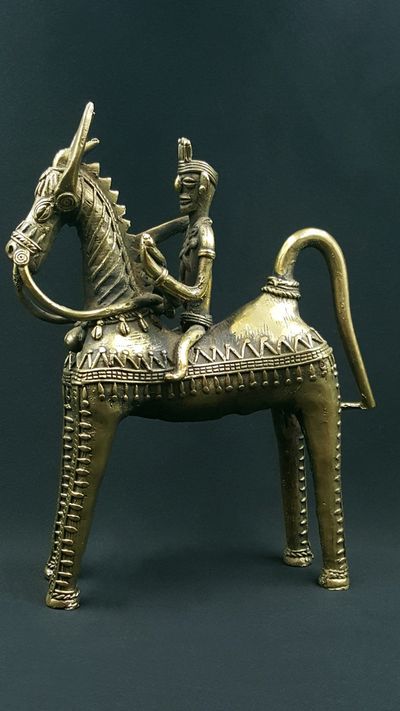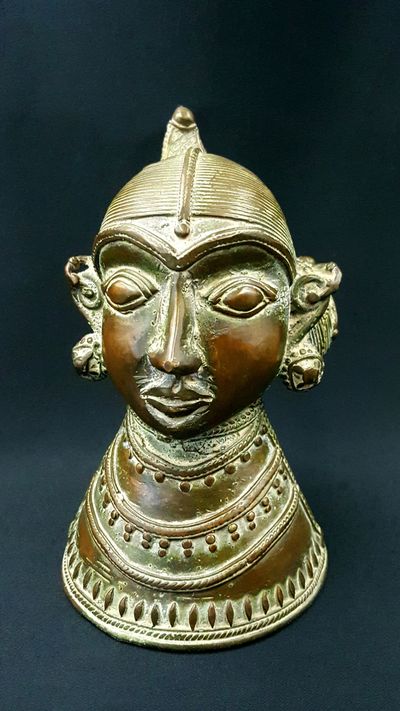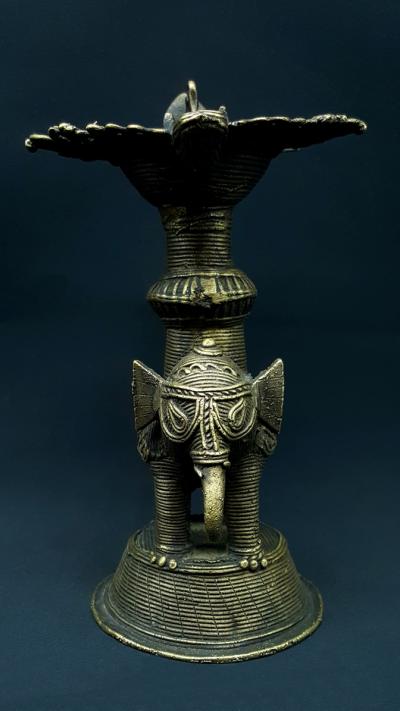Statue Bastar L’Eléphant
La parade
€350.00
Sculpture Bastar de l’art tribal richement décorée de parures festives, formes disproportionnées qui soulignent la taille de l’éléphant mais aussi sa majesté. En savoir plus...
Hauteur : 17 cm
Poids : 1,4 Kg
Art tribal
Technique de la cire perdue - Alliage cuivreux
Origine : Chattisgarh - Inde
Livraison gratuite UE, Norvège et Suisse
Description
Les Bastars
Le Bastar est un district de l'Inde du Sud dans l'État de Chattisgarh, il fût un royaume indépendant du 14ème siècle jusqu'à son intégration à l'Inde en 1948.
La population tribale représente 70% de la population du district de Bastar: les principales tribus sont les Gonds - les Abhuj Maria et les Bhatras. La plupart ont gardé leur tradition (art culinaire, vestimentaire, fêtes...) et leur religion animiste.
Les tribus vivent encore principalement de l'agriculture et des ressources tirées de la forêt (chasse, plantes médicinales, bois...).
Certaines tribus se consacrent à la fabrication de statues en laiton ou bronze depuis plus de 4000 ans. Cet art, que l'on retrouve aussi dans les États du Madhya Pradesh, de l'Odisha, dans l'Ouest Bengal, du Bihar... est appelé Dokra.
L'art Dokra : un savoir millénaire dans la fabrication des statues en laiton
Cet art tribal indien artisanal n'a pas changé depuis des millénaires (+ de 4000 ans) et la technique utilisée pour la fabrication de statues est toujours celle de la cire perdue : un modèle grossier en argile est réalisé puis recouvert de cire par l'artiste qui va lui donner sa forme définitive avec ses détails. L'ensemble est à nouveau recouvert d'un mélange argileux puis chauffé dans un foyer ouvert où un alliage cuivreux sera coulé. voir Blog
Les objets produits par les artistes Dokra peuvent être de nature usuels : coupelle, bougeoir... des instruments de musiques (cuivres), ou bien artistiques tels que des bijoux, des animaux : chevaux, éléphants, tortues..., des statues d'hommes et femmes représentant des scènes de vies quotidiennes et des divinités hindous adoptées par les tribus : Ganesh, Lakshmi,...
L'éléphant
L'éléphant revêt un aspect primordial de la vie tribale en forêt en Inde que ce soit en terme symbolique (force, sagesse...) que dans la vie quotidienne (impact sur le travail...). L'artiste a choisi de sculpter l'éléphant avec un corps démesurément long ce qui lui donne une impression de légèreté étonnante... : les jambes, le tronc sont finement exécutés, la queue très longue. L'animal perd toute sa lourdeur et adopte une allure gracile !
L'éléphant est présenté richement décoré, typique des parures Indiennes au moment d'une fête, lors d'une parade, d'un défilé où il est revêtu de multiples étoffes richement colorées, de fleurs... Il porte dans sa trompe un lotus qui symbolise le sein maternel (origine de la vie), la sagesse : la connaissance qui mène à l'éveil, la pureté (et donc la transformation qui permet l'expression de la beauté dans un milieu marécageux), la paix.
Beauté et simplicité
